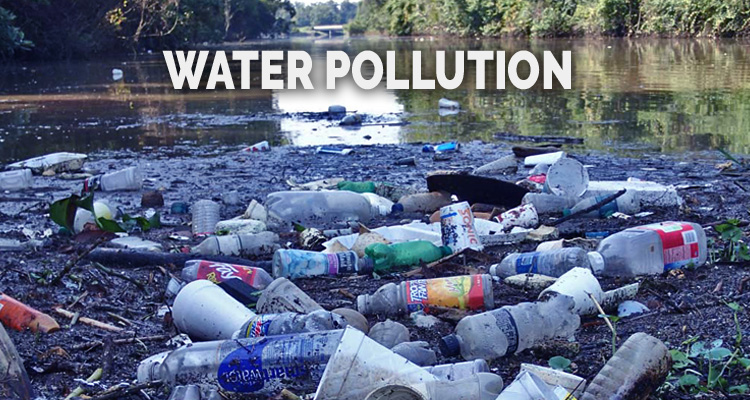Water Pollution In India

Water Pollution in India
Hyderabad is the capital city of Telangana situated on the Deccan Plateau. The city is drained by river Musi earlier, it was the major drinking source. In the year 1920’s two reservoirs Osman Sagar and Himayatsagar were constructed to meet the drinking water requirement of city people.
Hyderabad is one of the fastest growing megacities in our country. According to the records Hyderabad city population in 2017 – 10.8 million. To supply this population with drinking water is the greatest challenge for the govt of Telangana. To meet the water demand, water is being imported from outside sources for instance like Singur (Medak Dist), Nagarjuna Sagar reservoir Krishna River) and further Godavari water is also being drawn into the city.
• All the rivers are polluted generally by domestic and industrial effluents due to pollutants.
• Domestic sewage poses health-related issues whereas industrial effluents carry different toxic elements like cadmium, chromium, Lead and Zinc, which cause significant toxicity even after they are filtered.
Environment:
• City environment is becoming fragile due to the degradation and lack of legal action against environmental pollution activities.
• The supporting aquatic environment is devastated by both domestic as well as industrial sources and irresponsible human actions.
• The waste contains biodegradable as well as non-biodegradable which includes heavy metals.
• At present city is at the threat of fresh drinking water.
• Many water bodies had and have been diminishing in their size due to pollution by industrial sewage effluent and also domestic.
Let’s have a glance at the sources of pollution: Domestic, Industrial, Nutrients, wastewater, Chemical Waste, Plastica) Domestic sources-
• Many of the water resources of Hyd are polluted because of untreated domestic and industrial waste.
• According to Indian Planning Commission in the 10th plan document report stated that sewage is the major polluting source contributing to about 85% of the total water pollution.
• The analysis is like this-
Total sewage generated = 38000 million litres per day The Treatment capacity exists = 12000 million litres per day.It is clearly understood that the amount of wastewater generated is much more than the amount treated.
b)Industrial Sources:
Under Hyderabad city corporation limits nearly 20 industrial estates were established which are the catchment areas of the various potential sources of drinking water sources.
• Almost all lakes like Kazipallicheruvu, Gandigudemcheruvu, Nagulalcheruvu, Kistareddypetcheruvu, Muktakantacheruvu, Aminpurcheruvu, Bollaramcheruvu, Sakicheruvu, Muthangicheruvu, Isnapurcheruvu, Chitkulcheruvu, Lakadaramcheruvu, Peddacheruvu, Gummadidala tank, Bonthapalli tank, Jinnaramcheruvu, Kalatelealcheruvu, andDigwalcheruvu etc. are having a pollution problem.
The industrial areas that that account for pollution is 1. Jeedimetla, 2.Balanagar,3.ChandulalBardari, 4. Medchal, 5.Moulali, 6.Nacharam, 7.Cherlapalli, 8.Uppal, 9.Katedan,10.Autonagar, and 11. GaganPahad industrial development area
Some of the major polluting industries in and around Hyderabad city include cement mills, sugar, thermal power plants, distilleries, fertilizers, oil refineries, caustic soda production, petrochemicals, zinc smelting, copper smelting, aluminium smelting, sulphuric acid, integrated iron and steel, pulp and paper,tanneries, pharmaceuticals, dye and dye intermediates and pesticides industryChemical waste- Detergents, heavy metals and highly toxic chemicals such as polychlorinated biphenyls these were used by electronic circuit boards which are very harmful.Plastic: plastic is one of the most common materials, used for making virtually every kind of manufactured object from clothing to automobile parts. Most of the plastics are not biodegradable.How to control water pollution?
Education:
• Making people aware of the problem is the initial step to solve this water problem.Laws: Environmental laws can make it tougher for people to pollute. After bifurcation, Telangana state implemented environmental acts and rules. Water (Prevention & Control of Pollution) Act,1974. Some of the functions to be performed by the board are-• Control of pollution of streams and wells
• To advise the State Govt on any matter related to water pollution
• Collection of information relating to water pollution and thereby Prevention measures.
• To encourage, conduct and research in investigations for solutions.
• to evolve economical and reliable methods of treatment of sewage and trade effluents
Economics:
Most environmental experts agree that the best way to tackle pollution is something called the polluter pays principle. This means that whoever causes pollution should have to pay to clean it up, one way or another.for example. It could also mean that shoppers should have to pay for their plastic grocery bags
Our clean future:
Life is ultimately about choices. we can work together to keep the environment clean by using environmentally friendly detergents, not pouring oil down drains, reducing pesticides, and so on. We can take community action too, by helping out on beach cleans or litter picks to keep our rivers and seas that little bit cleaner. It is a teamwork.
Join hands to have safe drinking water.
M.Karunakar Reddy Editor-In-Chief Igniting Minds
Videos
Videos
Videos
@ignitingmindsmagazine
@IgnitingMindsin
Top Stories
- Dedicated to the Sparrows, Forests and Water
- The United Nations Decade of Ecosystem Restoration
- How technology in agribusiness affects climate change, a concrete solution.
- Restless Youth Seek Climate Action
- Telangana Jagruthi International Youth Leadership Conference 18,19,20th January 2019
- Sports for Climate Action Framework launched at COP24
- COP24: One Week of Misgivings
Videos
Businesses
- Can Home Remedies Increase Your Height.
- Success Comes When We Make Innovation a Habit
- Do You Want to Be a Green Entrepreneur?
- Igniting Minds Official Web Portal Launched in New Delhi.
- Strive To Drive The Life
- Do Mobile Apps Facilitate Small Businessmen?
- Water Conservation, Preservation and Restoration. A Global Engineering Challenge.